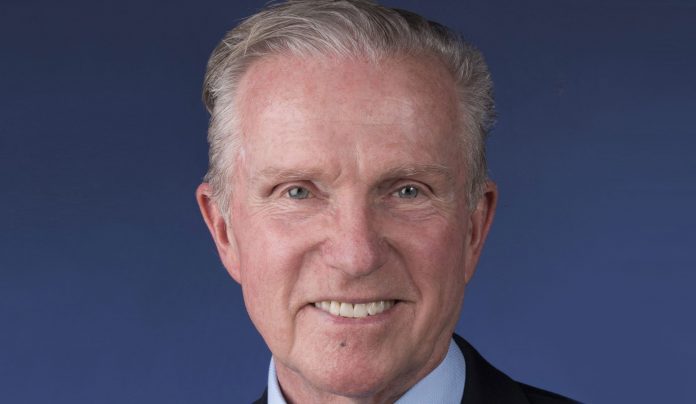The opinions expressed by Psychiatry & Behavioral Health Learning Network bloggers and those providing comments are theirs alone and are not meant to reflect the opinions of the publication.
I recently received an email at work with the subject line “Greetings.” Here is the first paragraph:
My name is Evan Haines*. I’m writing you because I believe my mother, who, sadly, committed suicide in 1989, was under your care. I remember your name, and that she always thought very highly of you.
I could feel my heart speed up as I read those sentences. I opened this email within the hour of teaching a didactic seminar to our psychiatry residents on malpractice litigation after suicide. How ironic is that? But 1989, that’s a long time ago. Could I be sued after so many years? I didn’t recognize the surname. Haines? There was no first name of his mother. The rest of his email was very straightforward, that he worked in the mental health/addiction field, and that he would welcome the opportunity to talk to me about what he called “the riddle of mental health.” There was nothing provocative or threatening in his words or tone. I put it aside and had some lunch.
Then suddenly, I remembered his mother by her birth name, then her married name. Lots of memories came rushing back. I was pretty confident that I had her chart locked up in a file cabinet at home. Why had I not shredded it after all these years? More about that in a minute.
I replied to Mr Haines and offered a telephone call later that afternoon. We chatted and he confirmed my recollection. I told him that I remembered his mother very well. She had been my patient for several years, and I remembered how much she struggled with her mental illness and the toll that it took on her health and functioning. I told him that I might have his mother’s medical record at home. He was surprised. I added that I would verify that, and if correct, I’d set up a zoom meeting with him in a couple of days. I also explained HIPAA rules and regulations, no surprise to him, and that I would honor those. He understood and agreed. I had the unspoken sense that simply responding to his email quickly and setting up a telephone call was some comfort and validation of his mission.
I did find the file and reviewed it carefully before meeting with Mr Haines over zoom. The first thing I noticed when his camera came on was how much he looks like his mother. He is a handsome man, bright, articulate, with an expressive face. His mother was strikingly beautiful, an artist, had a keen sense of fashion and style, and was very warm and engaging. I didn’t have to disclose any of his mother’s formal diagnoses, he already knew these: bipolar illness on top of borderline personality. He knew I had been his mother’s psychiatrist for a long time. He was 9 months old when I first saw her and his father together in 1975. I was aware that his father had custody of him after the divorce and he saw his mother on weekends when she was well and able to see him.
I showed him a drawing I found in the file dated December 10, 1982. This was a kinetic family drawing that I asked him to do when I saw him in my office. He was 8 years old. I recounted the dates of her many hospitalizations, most of which he remembered, including visiting her. The last time I saw her was in May 1988, and although she became psychotic again one month later, she was treated in a different hospital, and upon discharge, she was referred to a clinic closer to her residence. She took her life on February 4, 1989. She was 40 years old.
I learned a lot about my patient from this zoom meeting. Mr Haines told me that he knew from a very early age that his mother was “different” than other mothers. He grew up fast. He recognized when she was down and when she was gearing up into a hypomanic state. He learned about paranoid thinking and figuring out when her talk and beliefs just didn’t make sense. He could tell when she wasn’t well enough to be a mother to him. He learned about disinhibited behavior, self-harm, and reversal of parental roles when other boys his age could simply be boys. He’s 46 years old now, married, and a father himself. In this one-hour meeting, what came through to me was his sensitivity and compassion, wisdom, and how much he loved his mother, warts and all. It’s no accident that he works in the mental health field.
Our visit ended with an exchange. He sent me a digital copy of a letter he received from his mother’s primary care physician some years ago. Two sentences especially stood out for me. In reference to Mr Haines’ mother, the doctor wrote, “I spoke with her the day that she left us but arrived at her apartment too late. She left very quietly and in privacy; she appeared so much at peace.” It’s a beautifully crafted letter – warm, loving, personal and inspirational. I, in turn, put two things in the mail to Mr Haines, the family drawing and a Christmas card that his mother gave to my secretary and me in the early years that I had kept in her file. Keepsakes for him to have.
So back to why I still had his mother’s file. The simple answer is that one of my subspecialty areas and research is suicide, especially the aftermath. Since I finished my training in 1973, I have kept all the files of my patients who have died by suicide. These files include the ones under my care when they died and those who were no longer my patients when they took their lives. I have referred, selectively and anonymously, to a number of these former patients in my teaching and writing over the years so that I can illustrate and review details of their assessment and treatment with my students. And most importantly, I have access to verbatim quotes from my clinical notes about their despair and suicidality.
But there is a more complex reason for my hoarding that I wasn’t fully aware of until very recently when I read a piece called “A Place of Memory and Learning” by Dr Adam Cifu (1). He has kept a record (in a binder) of all his patients who have died since he began his primary care practice in 1997. He writes, “Although I do not see my collection as morbid, I do worry that my colleagues and trainees who learn of it might.” How this resonates with me. When fellow psychiatrists tell me that I seem obsessed with suicide, I don’t take it personally, even when the sardonic rejoinder is, “Well, someone’s got to do it, better you than me.” Dr Cifu adds this “The collection is not a place of bitterness and regret. Instead, it is a place I visit, to pay my respects, to learn, to reminisce, and to observe the arc of my career.”
I thank Dr Cifu for these two eloquent sentences. And his kinship. I thank Mr Haines for inviting me to join him on his quest for understanding his mother better and the battles she fought. He taught me a lot. It’s never too late.
– Michael F Myers, MD
*Evan Haines (https://www.ororecovery.com/) has read and approved of this piece. He has signed a release allowing his name to be used and granting permission for publication.
Reference
Cifu AS. A Place of Memory and Learning. JAMA. 2021 May 18;325(19):1939-1940.
Dr. Myers is Professor of Clinical Psychiatry and recent past Vice-Chair of Education and Director of Training in the Department of Psychiatry & Behavioral Sciences at SUNY-Downstate Health Sciences University in Brooklyn, New York. He is the author of 9 books, the most recent of which are “Becoming a Doctors’ Doctor: A Memoir”, “Why Physicians Die by Suicide: Lessons Learned from Their Families and Others Who Cared” and “The Physician as Patient: A Clinical Handbook for Mental Health Professionals” (with Glen Gabbard, MD). He is a specialist in physician health and has written extensively on that subject. Currently, Dr. Myers serves on the Advisory Board to the Committee for Physician Health of the Medical Society of the State of New York. He is a recent past president (and emeritus board member) of the New York City Chapter of the American Foundation for Suicide Prevention.
The views expressed on this blog are solely those of the blog post author and do not necessarily reflect the views of the Psychiatry & Behavioral Health Learning Network or other Network authors. Blog entries are not medical advice.
This article was first published on 03 June 2021 on Psych Congress









